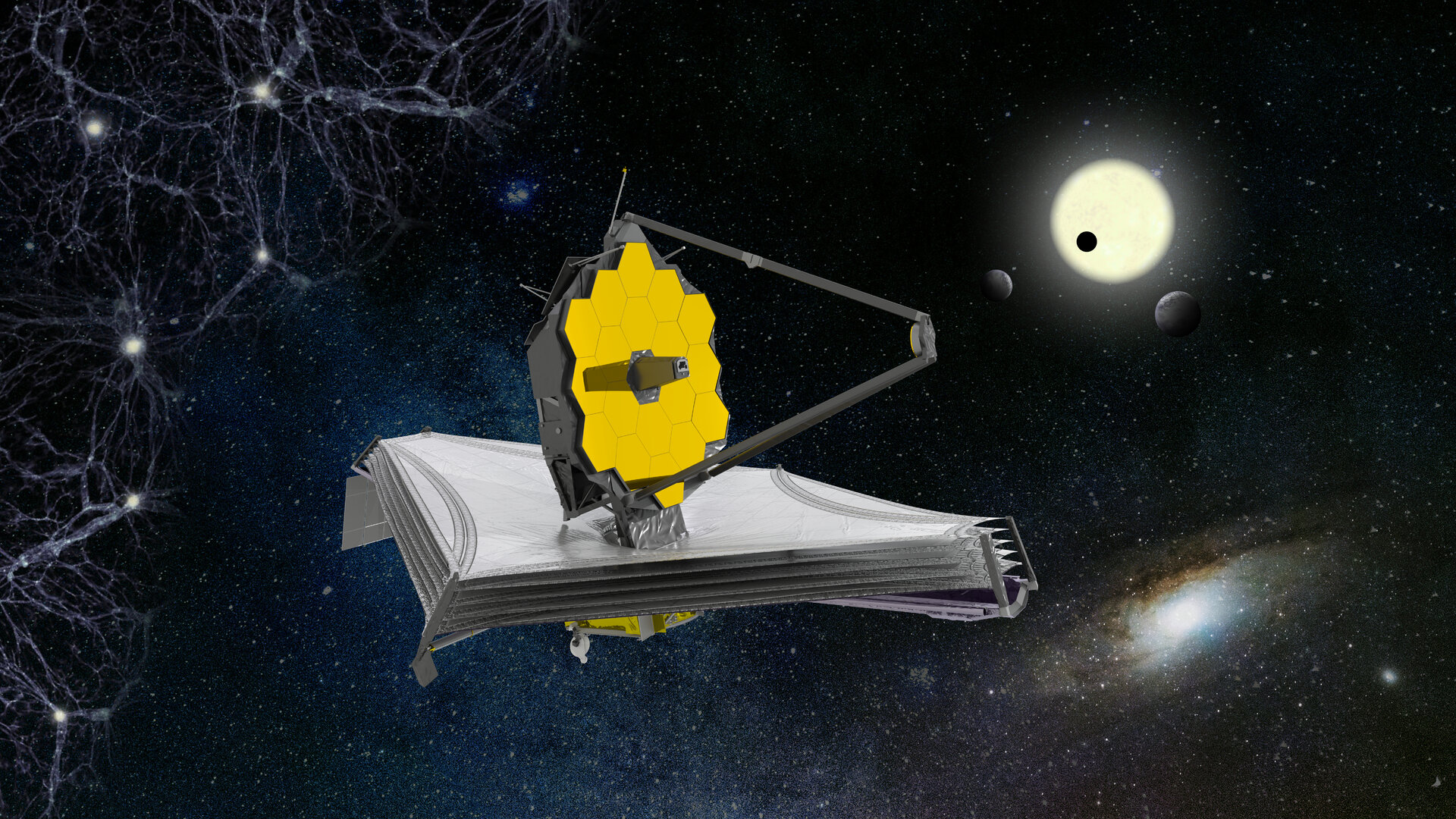The James Webb Space Telescope, a large space-based observatory, is primarily dedicated to the study of galaxies, stars and planet formation. It is optimized for infrared wavelengths that will complement and extend the discoveries of the Hubble Space Telescope.
It also covers longer wavelengths of light and has greatly improved sensitivity. The longer wavelengths will allow JWST to look farther back in time to see the first galaxies that formed in the early universe and peek into dust clouds where stars and planetary systems are forming today.
The telescope’s four instruments: cameras abd spectrometers – have decetors that are able to record extremely faint signals. Existing technology has not yet been able to provide the tools to study the properties of exoplanet’s atmospheres and composition in detail. But it is JWST that will undertake these studies with its specialized instruments. It will observe planetary atmospheres through the transit technique and also carry coronagraphs to enable photography of exoplanets near bright stars.
Researchers around the world are eagerly awaiting the scientific results.
The goals of the James Webb Space Telescope

